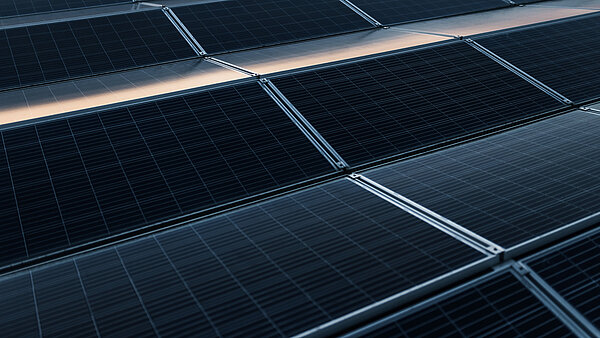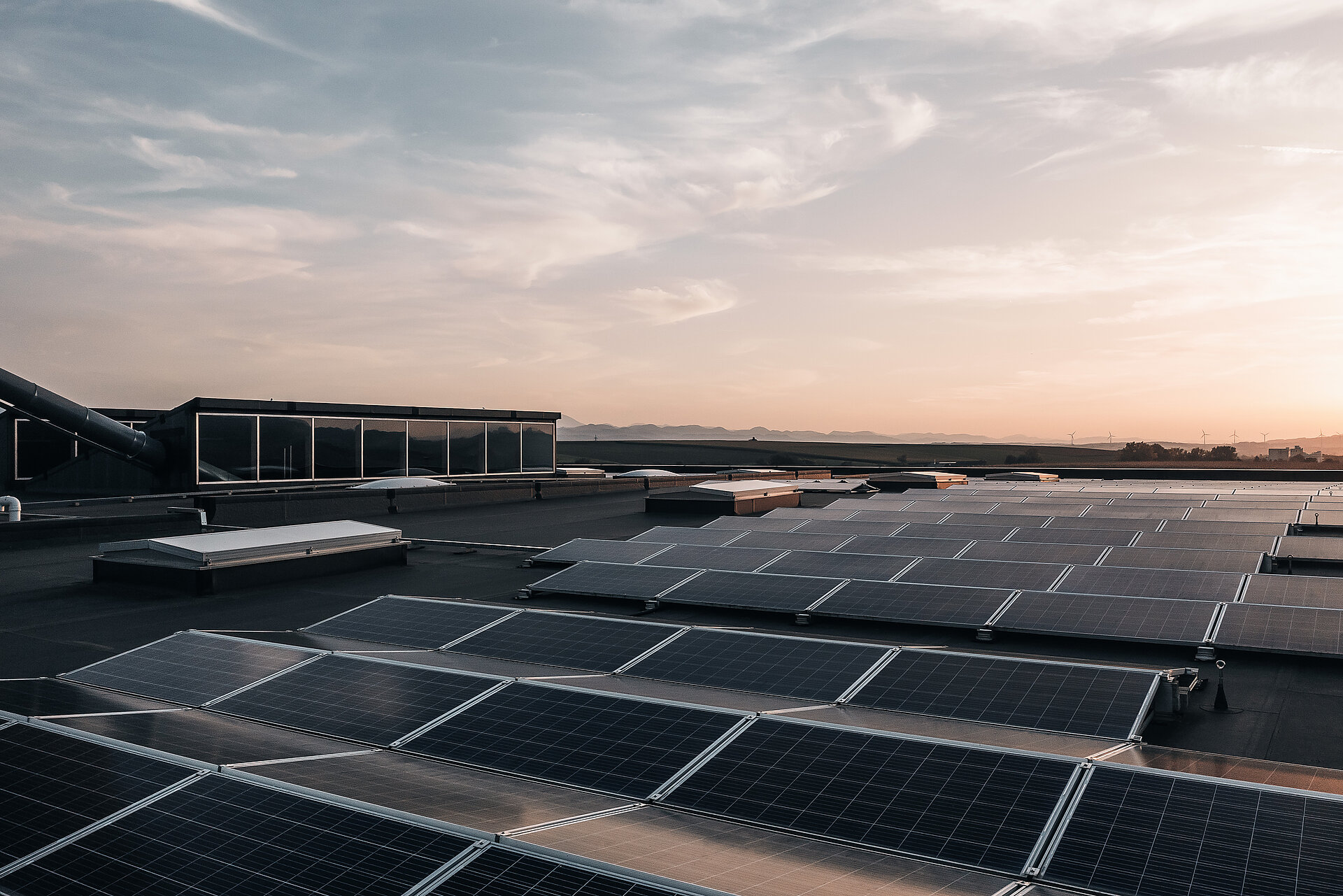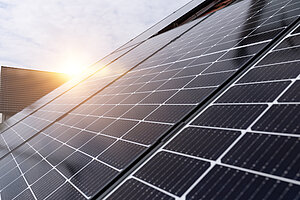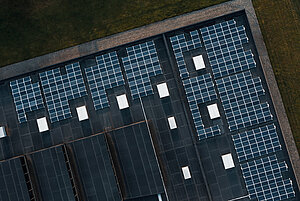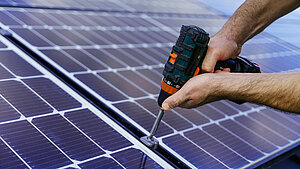But consider: on the roof, your employees are located in the fall risk area. This is why there are numerous regulations and standards relating to safety. In itself, the question of responsibility is governed by law – fundamentally it rests with the operator of the PV system. Therefore, if an accident occurs on the roof, he is responsible for the consequential damages; in the event of negligence, severe penalties may be expected. But in fact the solar system installers are also responsible for their employees who install the solar power plant on the roof, because these tasks too must be performed in safety. In addition, solar system installers are also obliged to inform their customers about potential risks and safety precautions for the PV system on the roof.
Attention: If the minimum requirements for safety on the roof as a workplace are not fulfilled, the employer may be made responsible even in the event of misconduct by an employee.
An overview of current practice
If the installation of a PV system takes five working days or less, then there is no need to register it with the Labour Inspectorate or with AUVA (Allgemeine Unfallversicherungsanstalt). In practice, this means that solar system installers or installation companies more or less have a free hand regarding roof access and protection. Because the Labour Inspectorate imposes strict requirements during the approval process, this is generally avoided by not registering the installation, because of its short duration. Thus, for example, even if the eaves are at a height of only four metres, by law a permanent ascent must be installed in order to obtain the required approval. However, as a rule only temporary scaffolding is used, and up to a certain height this does not have to be anchored. The advantage: It is really simple and rapid to set up.
But there is another side to this coin: If, in the course of an inspection, it turns out that the incorrect fall protection system was used on the construction site, or inadequate safety systems were used, a fine of up to 2,000 euros may be expected, to say nothing of the consequences under civil law. The solar system installer is legally obliged to assess all offsite places of work in detail, in order that he can then decide the ascent aids and safety precautions which are required. From the AUVA’s viewpoint, written documentation of this assessment would be highly recommended, because in this way all inspections and required measures can be easily tracked and implemented.
Attention: If a professional, certified fall protection system has been mandated but is missing, then the construction site can be closed by the Labour Inspector. In this case, a ban may be placed on access to the roof until the deficiencies have been corrected. Expensive safety measures such as collective protection are not always necessary or proportionate. Often PPE is sufficient, at least from the viewpoint of the AUVA in Austria. However, taken in the long term, a permanently installed fall protection system is generally the best and most cost-effective solution.
Confidence through certificates
In order that the AUVA or the Labour Inspectorate can approve the use of fall protection systems on the market, these systems must fulfil a number of requirements.
Detailed requirements for fall protection systems
- Realistic and practical testing of the fall protection system
- Check by the Labour Inspectorate’s own testing laboratory
- Full documentation
- Intelligible and comprehensive operating and installation instructions
Attention: even if the safety solution fulfils all technical requirements, it may fail the formal inspection because of incomplete documentation!
The situation in Switzerland
In Switzerland too, in terms of planning, installing, and maintaining PV systems on a roof, the solar system installer and the customer, or else the operator of the solar power plant, are responsible for the safety of the employees. This is specified in the applicable legal texts (BauAV/construction task regulation, VUV/regulation relating to accident prevention, and UVG/law on accident insurance). However, the client or owner can be made responsible if the accident is ascribed to defective equipment or manufacture, or a deficient fall protection system (strict liability). If there is a breach of the duty of care, then the owner may also face consequences under criminal and liability law.
For all involved, it is therefore very important always to ensure absolute safety on the roof for the full duration of the project, from the planning to the completed installation of the system, and then on to the cleaning and maintenance tasks. This requires a certified, correctly installed fall protection system. In addition, all access routes on the roof must be at least 60 cm wide. At the side, the separation should be no greater than 25 cm, and equipment such as drains or connections must be freely accessible at all times.
Link to the website of Schweizerische Unfallversicherung SUVA (Swiss Accident Insurance Association)
These mistakes are made frequently in practice
Unfortunately it often occurs that solar system installers or installation companies simply get on with the work without sufficient preparation or research, and just install the PV system on the roof. However, this is exactly what § 3 of the Austrian employee protection act – “General obligations of employers” makes mandatory: in this regard, the original text states “Employers must inform themselves appropriately about the latest state of the art and about learnings relating to how work is structured, taking into account the risks that are present”.
Here is an extract from the German legal text regarding industrial safety (occupational safety act - ArbSchG): In Germany the employer is obliged to implement the necessary industrial safety measures which affect the safety and health of the employees while they are working. In addition, he must ensure that the measures taken for this purpose are complied with by all those involved, and that the employees are able to fulfil their obligations to cooperate.
It is also essential not only that the fall protection systems implemented are tested and approved, but also that they are appropriate for the respective application and, of course, also certified accordingly. For this too, thorough research is required, or even collaboration with a trustworthy manufacturer of safety solutions for PV installations on a roof. Using a low price as the sole selection criterion can have fatal consequences. Indeed, the safety of the implemented fall protection system is often determined only when an emergency occurs. A cheap solution is a classical example of the illusion of safety! According to the Labour Protection Act, the employer is also obliged to avoid such mistakes. In some cases, a safety specialist in one’s own company will also need training, in order to have the necessary expertise in this regard.
Benefits of fall protection systems which are installed on the PV substructure
A fall protection system installed directly on the PV substructure on a roof enjoys a number of technical and practical benefits compared with other solutions. It requires no additional space, and so the roof surface can be used optimally for solar panels, without creating any shading. But even from the legal viewpoint, systems held by superimposed load are advantageous, because only the statics of their combined structure require examination. In addition, using such solutions, the entire roof surface is fully visible, and so potential obstructions on the roof no longer represent a safety risk. Furthermore, there is no need to open the roof cladding. In the medium and long term this can cause leak points, and damage the statics of the roof.
Collaboration of AUVA and the Labour Inspectorate in practice
While the Labour Inspectorate is responsible for regulatory compliance related to the Labour Protection Act by businesses and on construction sites, and conducts approval processes, AUVA is responsible for supporting and advising companies in terms of pre-emptive accident prevention. In other words: AUVA helps solar system installers and operators of PV systems to correct the defects detected by the Labour Inspectorate. For this purpose prevention centres throughout Austria employ experts in workplace health and safety. You will find further information here.
Summary
Installing a photovoltaic system on a roof means that its surface is accessed more frequently. Those working in this location are therefore present in an area subject to fall risk. Under these circumstances, not just the operators of PV systems on a roof, but also the solar system installers and installation companies are responsible for their employees and are liable for accidents which were preventable if the correct, legally compliant safety precautions had been implemented. In the event of negligence, there is a threat of severe penalties and possibly also of proceedings under civil law. While the Labour Inspectorate reports safety deficiencies on a roof, AUVA/SUVA help affected companies to correct these.
Contact us immediately for further information. Our experts are very happy to support you in finding the optimum fall protection system for the respective PV system on your roof. That way, you have absolute legal certainty at all times. And: download our checklist/tips on this topic now!








![[Translate to Englisch:] [Translate to Englisch:]](https://www.innotech-safety.com/fileadmin/_processed_/1/a/csm_Mehrere_PV-Kunden_gleichzeitig_betreuen__kann_oft_zur_Riesenherausforderung_werden-header_c1a520d846.jpg)

















